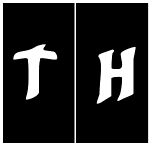|
Be the first user to complete this post
|
Add to List |
Introduction to Excel WorkBook
One complete Excel file is called as WorkBook.
Now this is something interesting, for dealing with the WorkBook, in general we have two options
- By using ActiveWorkbook
- By Storing the instance of ActiveWorkbook to WorkBook reference
By using ActiveWorkbook
ActiveWorkBook.Sheets("Sheet1").Range("A1").Value=1
By Storing the instance of ActiveWorkbook to WorkBook reference
Dim mainWorkBook as WorkBook
Set mainWorkBook = ActiveWorkbook
mainWorkBook.Sheets("Sheet1").Range("A1").Value
this is basic example, you will see the detail explanation about WorkBooks, WorkSheets and Range in next sections.
Why we prefer the option 2:
Suppose you have many excel files opened already and your MACRO is using ActiveWorkbook option dealing with more than one excel files at a time then your ActiveWorkbook will keep on changing as it deals with different excels and this may confuse the program and you might end up with Errors. On the other hand if you store the instance of a ActiveWorkbook to a reference then all you have to do is just get hold with that reference and it will always refer to the main workbook where your code is written.
Also Read:
- VBA-Excel: Enumerate all the opened word document
- Excel-VBA : Insert Multiple Images from a Folder to Excel Cells
- VBA-Excel: Open an Existing Word Document
- Add Tools to Quick Access Tool Bar(Excel Top Bar)
- VBA-Excel: Get the Instance of already opened word document

